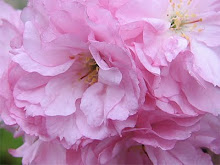
Herman Aihara and Carl Ferre have given us a wonderful set of tools to use for our health. Mr. Aihara’s book, Acid and Alkaline, explains in a clear, textbook style how specific foods (as well as a lot of other factors in our lifestyles) can lead to acidosis, the underlying cause of most illnesses today, while other foods that are more alkaline-forming can help us to get better. This book is the theory of macrobiotics in action, a true application of George Ohsawa's Unique Principle.
Carl Ferre has written a followup book, Acid Alkaline Companion, that provides a practical, easy-to-understand synopsis of what causes acid and alkaline conditions in our bodies. In addition, it contains a remarkable set of detailed food tables that show us specifically which foods are more acid-forming, more alkaline-forming, or more neutral. He also provides a list of references to several other books on the subject of acid and alkaline, along with a brief description of each.
Herman Aihara’s Acid and Alkaline contains easy reference charts that organize foods into four groups: Yin/Alkaline-Forming, Yin/Acid-Forming, Yang/Alkaline-Forming, and Yang/Acid-Forming. A well-balanced meal will contain a food from each of these four groups. Once I clearly understood the differences between these four food groups, it was easy for me to memorize the broad categories in his “Four-Wheel Chart” (page 88, Acid and Alkaline) and now it’s almost second nature for me to remember that:
1) Honey, coffee, herb tea, bancha tea, fruits, seeds, and vegetables are Yin/Alkaline-Forming.
2) Chemical drugs, pills, sugar, soft drinks, alcohol, nuts, and beans are Yin/Acid-Forming.
3) Radish pickle (dry), soy sauce, miso, umeboshi salt plums, certain sea vegetables, and sea salt (unrefined) are Yang/Alkaline-Forming.
4) Meat, animal foods, and whole grains are Yang/Acid-Forming.
From there, I just need to figure out details and quantities — how much yin is in this certain food, how much yang? — so that I can balance it with its opposite. Classic examples of food balancing: meat and potatoes, minestrone soup & croutons, or salty pork & beans with thick, rich coffee on the wagon train!
Although these examples are balancing foods from each of the four groups, they are on the more extreme ends of the yin-and-yang scale. To achieve an ideal balance, foods that are more towards the center of yin and yang as well as from the four groups would be better — that is, a meal that contains a vegetable, a nut or bean, a whole grain, and miso or a sea vegetable like wakame.
Notes:
Both of these books, Acid and Alkaline, by Herman Aihara and Acid Alkaline Companion, by Carl Ferre, are available on the George Ohsawa Macrobiotic Foundation website.
Related Articles:
No More Sugar
Hummingbirds and Seaweed
What Is The Macrobiotic Centering Diet?






















































